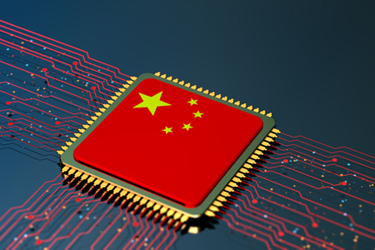China In The Global Medtech Industry: Equal Parts Promising And Uncertain
By Ivor Campbell, Snedden Campbell

While China is the world’s second biggest market, behind the U.S., its activities are principally focused on its own internal market and a handful of others, mainly in Russia, North Africa, and the Middle East.
In The West, Chinese Medtech Remains An Unknown Quantity
To many healthcare buyers in the U.S., Europe, Southeast Asia, and in the growing markets of Africa and South America, China remains an enigmatic and largely unexplored entity.
Even industry veterans in those territories will tell you that the only time they only ever come into proximity with a Chinese medtech, biotech, or life sciences company is at international trade conventions. This year at the Medlab Middle East conference (a large global laboratory exhibition with more than 23,000 attendees and 650 companies), the Chinese delegation was out in force, both physically and across all of the pre-convention marketing hype. Press releases promoted the latest Chinese innovations, including biotechnology company Vazyme’s automatic nucleic acid extraction instrument, its SARS-CoV-2 antigen detection kit, its post-vaccination antibody detection kit, and its quantum dot fluorescence immune analysers. Tianlong, in collaboration with Shanghai Kehua Bioengineering and Focus Diagnostics, highlighted a range of solutions, including its real-time PCR system. Among the new technologies showcased by Fapon was its ultra-high throughput CLIA system.
If you have never heard of any of these companies, you are not alone. Not because they are in any way discriminatory about who they trade with, but because the size of the internal Chinese market is so vast that their activities tend to take place primarily within it.
Chinese Government Initiatives Could Influence The Global Market
Since the Covid pandemic, China's localization strategy for medtech has gone into overdrive, significantly impacting international competition.
The Chinese government's initiatives to reform the country’s medical system and boost its domestic market have led to an accelerated localization trend, reshaping the competitive landscape and influencing global trade dynamics.
The emphasis on Made-in-China as a common precondition for government procurements creates hurdles for foreign suppliers. International medtech companies face challenges in accessing the Chinese market due to the preference for locally manufactured products.
The Chinese government continues to invest heavily in its public hospitals, making them a crucial part of the medical system reform. Volume-based procurement extends to medical devices, driving increased shipment volumes but squeezing profits for manufacturers.
Other Chinese government initiatives, such as “In China for China” or “In China for Global,” demonstrate a commitment to both local and global markets. Made-in-China products have advantages in government procurement considerations, quicker approval processes, and lower costs.
Naturally, given the potential riches on offer, many western medtech multinationals are now tailoring their R&D and manufacturing strategies to align with the Chinese market's unique needs and government initiatives.
Companies like Siemens Healthineers, Philips, and Medtronic are accelerating their localization strategies, manufacturing products within China to better align with market needs.
Medtronic's strategic partnership with Changzhou National High-tech Industrial Development Zone demonstrates its commitment to manufacturing, R&D, and innovation in China.
Boston Scientific's launch of an intravenous ultrasound imaging product in Shanghai for the global market signifies a strategic move in alignment with its 25th anniversary vision.
Siemens Healthineers' construction of a large production base in China and Philips' goal to achieve 100% made-in-China products for certain segments further highlight this trend.
In China, Commercial Reality Is Not Always What It Seems
Privately, however, some western companies are anxious about operating in and engaging too closely with a country where commercial reality is not always what it appears to be.
Just as questions remain about the independence and transparency of state-owned technology companies such as Huawei, there are concerns over how autonomous, or profitable, many of China’s medtech companies are, particularly those that rely on large amounts of government support. What chance does a small medtech business from the U.S. or U.K. have in the vastness of China?
This opacity also raises questions about whether businesses may be fronts for other interests. A country prepared to blatantly spy on sensitive national interests, even in the U.K. Parliament, is likely to be a challenge for an IP-rich business to work with on a trusted partner basis.
China’s Centralized Economy Could Hinder Opportunities For International Collaboration
In the competitive landscape of the medtech industry, collaboration and information exchange are crucial for fostering innovation and staying ahead. The centralized nature of China's economy and controls has the potential to hinder collaboration, creating a barrier to entry into global markets.
Top-down controls may also stifle the organic growth of ideas and entrepreneurial ventures that will be essential for the industry's evolution. The question arises whether China's medtech companies can truly compete on a global scale when centralized governance hampers innovation and creativity.
Without local collaboration, western companies basing R&D and manufacturing facilities in China will need to bring their own researchers and scientists. Whether qualified professionals from leading innovation hubs, such as San Francisco or Cambridge, will be inclined to relocate to China, with all the restrictions on their freedom they will encounter, remains uncertain.
While India appears to be lagging behind China in the size of its medtech, biotech and life sciences industries, it may be that, lacking the government-funded sweeteners on offer in China, its position is more grounded in commercial reality. China might be able to demonstrate more impressive physical “evidence” of the scale of its industry but, given that we are not privy to the size, or indeed the existence, of any tangible returns on its investments, it may be that India's more cautious approach will ultimately yield more sustainable long-term growth.
Whether all the talk of China’s booming medtech industry is grounded in reality, or just Chinese whispers, remains to be seen.
 About The Author:
About The Author:
Ivor Campbell is chief executive of U.K.-based Snedden Campbell, a specialist recruitment consultant for the medical technology industry.
